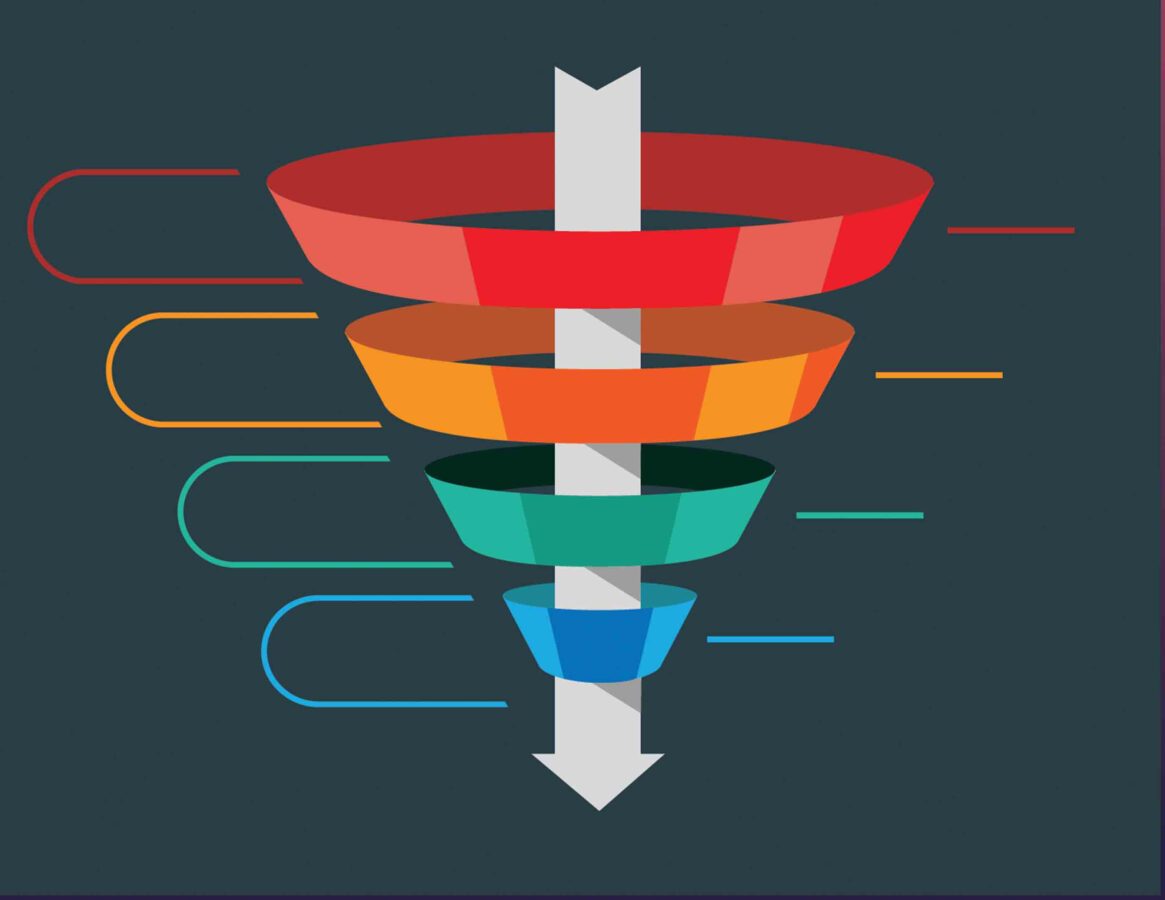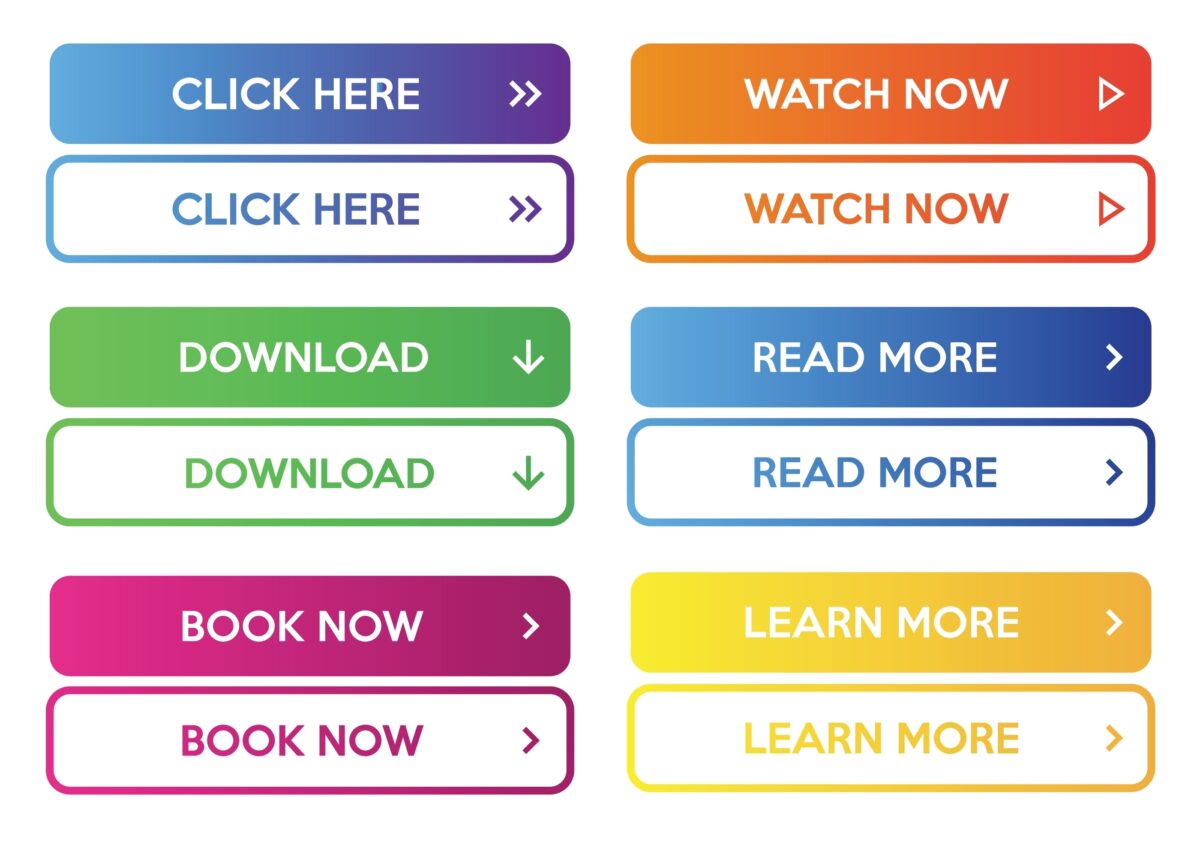
Optimizing Your Marketing Funnel for IT and Software Leads
Successful marketing and sales, especially in IT and Software, are the result of effectively navigating the customer journey. The marketing funnel serves as a roadmap to guide potential customers from their first interaction with your brand to the final purchase decision.
Introduction to the Marketing Funnel for IT and Software Companies
The marketing funnel serves as a visual representation of the customer journey, from initial awareness to the final purchase decision. It’s particularly crucial in the tech industry, where the sales cycle can be complex and extended.
Marketing Funnel Basics
The marketing funnel starts wide at the awareness stage, where potential customers first learn about a company. It narrows down through consideration and decision stages until it reaches the point of action or purchase.
This funnel shape signifies the gradual reduction in numbers as prospects move closer to making a purchase. Not all who become aware of your brand will consider it, and not all who consider it will eventually make a purchase. Understanding this funnel concept is crucial in creating effective marketing strategies that address each stage of the customer journey.
Importance of the Marketing Funnel in IT and Software Industry
In the IT and software industry, the marketing funnel holds significant importance due to the typically complex nature of the sales process. Given the technical intricacies of the products and services offered, customers usually require a more extended period of consideration and evaluation.
The marketing funnel helps IT and software companies visualize and understand their customer’s journey. It enables them to create tailored marketing strategies that effectively guide potential customers through each stage of the funnel.


Stages of the Marketing Funnel
The marketing funnel consists of several stages, each representing a different phase of the customer’s journey. These stages are awareness, interest, consideration, intent, evaluation, and purchase.
- Awareness: This is the stage where potential customers first become aware of your brand, product, or service. Your goal here is to attract their attention and spark their interest.
- Interest: At this stage, potential customers express interest in your product or service and start seeking more information.
- Consideration: Here, potential customers begin comparing your offering with others in the market and consider whether it meets their needs.
- Intent: At the intent stage, potential customers show a direct interest in your product or service and may indicate this through actions like adding a product to a wish list or cart.
- Evaluation: This is the stage where customers make the final decision to proceed with the purchase.
- Purchase: The final stage of the funnel, where customers complete the purchase transaction.
Developing targeted strategies that address the specific needs and concerns of potential customers at each stage will ultimately drive them toward a purchase.
Unique Challenges of Tech Industry Lead Generation
Lead generation in the tech industry is fraught with unique challenges. From conveying complex product offerings to combating fierce competition, tech companies must navigate these hurdles to effectively attract and convert leads.
Complex Product Offerings
One of the key challenges in the tech industry is effectively conveying complex product offerings to potential customers. Tech products and services are often intricate, packed with jargon, and require a certain level of understanding that the average consumer may not possess. This complexity can lead to confusion and misunderstanding, hindering lead generation efforts.
To overcome this, tech companies need to master the art of simplifying their messaging. This involves breaking down complex concepts into digestible pieces of information and explaining them in a language that your target audience can understand. Utilizing visual aids, demos, and case studies can also help convey the value proposition more effectively.
Fierce Competition
The tech industry is notorious for its fierce competition. There are countless companies offering similar products and services, all vying for the same customer base. This level of competition makes it challenging for companies to stand out and generate qualified leads.
Differentiation has to be in the form of innovative product features, superior customer service, competitive pricing, or any other unique selling proposition. By effectively communicating what sets them apart, tech companies can attract more leads and convert them into customers.
Rapid Technological Changes
With new trends and technologies emerging at a rapid pace, companies need to continually adapt their products, services, and marketing strategies to stay relevant. This makes lead generation even more challenging. Staying abreast of industry trends and advancements becomes critical. Companies should also strive to be innovators rather than followers, constantly looking for ways to improve their offerings and provide value to their customers so as to not let their products become obsolete.
Strategies to Attract and Engage Top-of-Funnel Leads
The top of the marketing funnel represents the awareness stage, where potential customers first come into contact with your brand. Attracting and engaging these top-of-funnel leads is crucial to filling your marketing funnel and driving them towards a purchase decision. Here are effective strategies that IT and software companies can employ
Content Marketing
Create and share valuable, relevant, and consistent content, to draw in potential customers, build trust, and establish your brand as an authority in your industry.
- Blogs: Informative and SEO-friendly posts published regularly on your website attracts visitors and generates leads.
- Ebooks and Whitepapers: Such in-depth resources provide value to your audience and position you as a thought leader.
- Webinars and Podcasts: Such interactive forms of content can connect you with your audience on a deeper level.
SEO
Optimize your website and content for relevant keywords to rank higher in search engine results and attract more organic traffic.
- Keyword Research: Identify the keywords your potential customers are using to find products or services similar to yours and optimize your content accordingly.
- On-Page SEO: Ensure your web pages are search engine optimized by using relevant meta tags, headers, and URLs.
- Backlink Building: Earn high-quality backlinks from reputable websites to boost your search engine rankings and increase your visibility.
Check out this article to know more about optimizing SEO for SaaS.
Social Media Engagement
Social media platforms offer a valuable opportunity to reach and engage with your target audience. Share engaging content and interact with your followers to build relationships and generate leads.
- Regular Posting: Share a mix of promotional and non-promotional content regularly to keep your audience engaged.
- Community Engagement: Respond to comments, participate in discussions, and create a community around your brand.
- Paid Advertising: Use targeted social media ads to reach a wider audience and attract more top-of-funnel leads.
Video Marketing
Video marketing is becoming increasingly popular and can be a powerful tool for attracting and engaging top-of-funnel leads. Videos are engaging, easy to consume, and can explain complex concepts in a simple and understandable way.
- Explainer Videos can break down complex product features or concepts.
- Product Demos show potential customers how your product works and the value it offers.
- Customer Testimonials show satisfied customers talking about their positive experiences with your product or service.
Check out this article to master video marketing as part of your comprehensive marketing strategy.
Nurturing Mid-Funnel Leads Through Targeted Content and Outreach
Top-of-the-funnel leads need to be nurtured through the middle of the funnel – the consideration stage. Here, potential customers are evaluating their options and deciding whether or not to make a purchase. Provide targeted content and personalized outreach to guide them towards choosing your product or service.
Targeted Content
At this stage, potential customers need more specific information about your products or services to help them make an informed decision. This calls for content that addresses their specific concerns and showcases the unique value of your offerings.
- Product Comparisons highlight your unique selling points.
- Case Studies showcase real-world examples of how your product or service has benefited previous customers, and enables prospects to see how they could benefit.
- In-depth Guides explain how to use your product or service effectively.
Personalized Outreach Strategies
Personalization is key to successful mid-funnel lead nurturing. Tailor your outreach efforts to individual leads based on their behaviors and preferences; make them feel valued and understood, increasing the likelihood of conversion.
- Segmentation: Divide your leads into smaller groups based on shared characteristics and tailor your messaging to each group’s specific needs and interests.
- Personalized Messaging: Use personalization tokens in your outreach efforts to address each lead by name and reference specific actions they’ve taken or interests they’ve shown.
- Behavior-based Outreach: Track your leads’ behaviors and interactions with your brand, and use this information to send targeted outreach at the right time.
Email Marketing
Email marketing allows you to deliver targeted content directly to your leads’ inboxes, keeping your brand top-of-mind as they move through the decision-making process.
- Automated Drip Campaigns can help you send a series of emails to your leads over time, gradually guiding them towards a purchase.
- Clear CTAs in your emails encourage your leads to take the next step like scheduling a demo, downloading a resource, or making a purchase.
Retargeted Ad Campaigns
Stay top-of-mind with mid-funnel leads who have interacted with your brand but haven’t yet made a purchase with retargeted ads. By showing targeted ads to these individuals as they browse other websites or social media platforms, you can remind them of your offerings and encourage them to return to your site.
Converting Bottom-of-Funnel Leads into Customers
At the bottom of the funnel, leads are on the verge of becoming customers. They’ve expressed interest in your product or service and are considering making a purchase. The challenge here is to convince them that your offering is the best choice. Here are a few strategies you can use.
Clear Value Proposition
Clearly communicate the unique value your product or service provides. More than listing features, this is about showing how those features solve problems or deliver benefits.
- Product Demonstrations shows leads firsthand how your product works and the benefits it offers.
- Customer Testimonials provide social proof, reassuring leads that others have found value in your offering.
- ROI Calculations helps leads calculate the potential return on investment (ROI) they could achieve by using your product or service.
Addressed Objections
Address each lead’s unique concerns proactively and honestly, ensuring their objections don’t prevent them from making a purchase.
- FAQs address common questions and concerns that overcome objections and saves your sales team time by reducing the number of repetitive inquiries received.
- Live Chat Support answers any last-minute questions or concerns leads may have in real-time.
- Risk Reversal Tactics like money-back guarantees or free trials help alleviate concerns about investing in a new product or service.
Effective Calls to Action (CTAs)
Your CTAs guide leads towards conversion. It’s essential to make them clear, compelling, and easy to act on.


- Use Clear Language so leads know what they need to do next – “Schedule a Demo”, “Start Your Free Trial”, or “Buy Now”.
- Strategically Place CTAs, based on the content they’re in, to ensure their effectiveness.
- Use Attractive Design to make your CTAs stand out and enticing to click on.
Analyzing and Optimizing Your Marketing Funnel for Continuous Improvement
A marketing funnel is not a “set it and forget it” tool. To ensure its effectiveness, it’s essential to continually analyze and optimize your funnel based on performance data.
Monitor Key Metrics
Monitoring key metrics to see how well your marketing funnel is working and where improvements are needed.
- Conversion Rates measure the percentage of leads that move from one stage to the next, and ultimately become customers. Low conversion rates can indicate a need for optimization.
- Customer Acquisition Cost (CAC) is the total cost of acquiring a new customer, including all marketing and sales expenses. A high CAC might mean you need to improve the efficiency of your marketing funnel.
- Customer Lifetime Value (CLTV) is the total revenue you can expect from a single customer over the duration of their relationship with your company. If your CLTV is less than your CAC, you may need to focus on retaining customers longer or increasing the value of each sale.
Improve Funnel Performance
Based on your analysis of key metrics, there are several strategies you can use to improve your marketing funnel’s performance.
- Personalization: Personalizing your marketing messages and content can increase engagement and conversion rates. Consider using dynamic content that changes based on the viewer’s behavior, preferences, or demographics.
- Lead Scoring: Implement a lead scoring system to identify the most qualified leads. This allows you to focus your efforts on leads who are most likely to convert, improving the efficiency of your funnel.
- Sales and Marketing Alignment: Ensure your sales and marketing teams are aligned in their goals, strategies, and messaging. This can create a more seamless experience for leads as they move through the funnel.
A/B Test for Optimization
A/B testing involves comparing two versions of a webpage, email, or other marketing asset to see which performs better. This can help you make data-driven decisions about what changes to make. Test:
- Headlines and CTAs
- Design Elements
- Content Formats
By continually analyzing and optimizing your marketing funnel, you can ensure it remains effective and efficient over time. Remember, improvement is a continuous process.
A well-structured marketing funnel is crucial for guiding your potential customers through their buying journey. This requires a strategic approach and effective tactics at each stage.
However, developing and implementing a successful marketing funnel can be complex and time-consuming. This is where a professional marketing agency can make a significant difference. With their expertise in creating targeted content, personalized outreach, email marketing, overcoming objections, and utilizing effective CTAs, they can help streamline your marketing funnel for maximum efficiency and results.
If you’re ready to take your marketing funnel to the next level, consider partnering with a marketing agency. Their expertise can provide you with the strategy and implementation support needed to drive successful conversions and boost your bottom line.
Ready to optimize your marketing funnel to increase leads?
Talk to the marketing specialists at Cyan today. Contact Us.


Discover what Cyan can do for you
We want to get to know you better so we can understand what services are going to help you meet your goals.